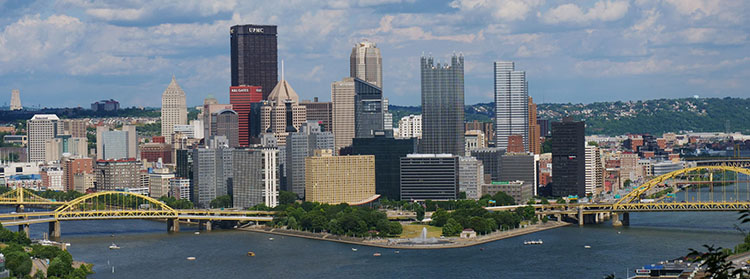
Pittsburgh’s Prettiest Perch – The West End Overlook
April 19, 2021
Walking Grandview Avenue
May 10, 2021Butler County was named for Richard Butler, who was born in Dublin, Ireland. He came to the area in the 1770s and was a trader at Fort Pitt. He also served as a General in the Revolutionary War. Butler County was named for him in 1800 when the county was established as was the city of Butler, the county seat. Below are some of the places in Butler County and how they derived their names.
Cranberry Township
Brush Creek is the main water source in this municipality, and back in the day, cranberries grew along it, attracting deer and in turn hunters. Although the cranberry bogs have long since disappeared due to drought, the township remembered them when it came time to incorporated in 1804.
Evans City
In 1836, Thomas Evans bought the old mill on Breakneck Creek. Originally called Evansburg, the town was later called Evans City.
Harmony
Talk about a contrast. At one time, Harmony was known as Murdering Town. In 1753, George Washington and Christopher Gist came through this area and came under gunfire. Later in 1804, George Rapp and his communal religious group The Harmony Society came her and settled, calling their attempt at a utopian community Harmony. Thank goodness. Could you imagine trying to promote tourism and commerce in Murdering Town?
Mars
Although a subject for “out-of-this-world puns,” (sorry, couldn’t resist), no one is exactly sure how this area of Butler got its name. Some speculate it came from a shortened version of the name “Marshall,” which was the surname of a prominent resident of the time, Samuel Marshall. At least, it’s not named Area 51.
Saxonburg
This town has always had German roots. Originally called Germania, it was founded as a German farming community by F. Carl Roebling, who is noted for building the Brooklyn Bridge, and his brother, John. It was later named Sachensburg after that region in Germany, and then it was anglicized to Saxonburg.
Slippery Rock
In 1779, Col. Daniel Brodhead led an expedition from Fort Pitt to suppress the Seneca Indians north of the fort. The Indians surprised the troops and began to purse them. The soldiers fled across a stream studded with large, smooth rocks. Wearing heavy boots, the soldiers were able to cross on the rocks, but the Indians slipped and fell into the stream. The Indians called the stream “Wechachapohka,” which meant “slippery rock, “which later led to the town’s naming.
Valencia
Once known as Sunnyside, this town in Butler county was renamed by the railroads as Valencia.
Zelienople
Zelienople has a noble background. In 1802 Baron Detmar Basse came to the area from Frankfurt, Germany, and called the village he established there Zelienople after his daughter, Zelie, whose actual name was Fredericka. Good thing she adopted a nickname. Although Zelienople is a bit unusual, Frederickanople just doesn’t roll off the tongue.
By Janice Lane Palko




